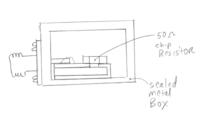Amirbaro
Newbie level 4
Hi,
Please hep me with following basic RF questions:
What is the different between Antenna return loss and antenna efficiency?
What does antenna return loss mean? Doesn't return loss depend on the impedance matching?
Thanks
Please hep me with following basic RF questions:
What is the different between Antenna return loss and antenna efficiency?
What does antenna return loss mean? Doesn't return loss depend on the impedance matching?
Thanks
